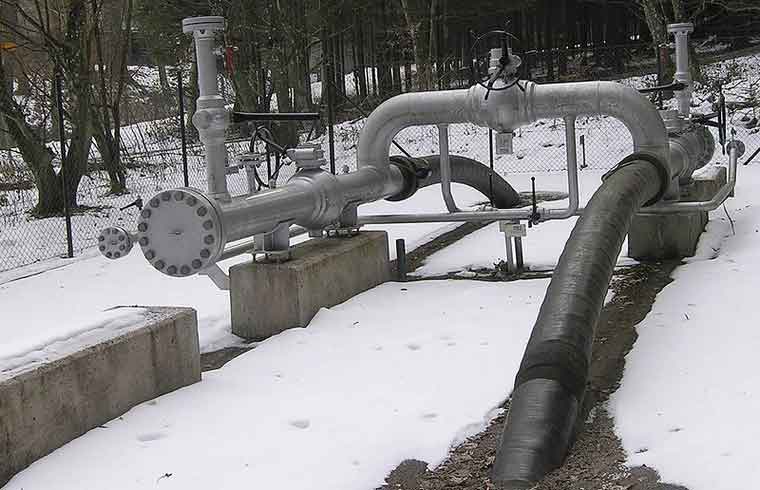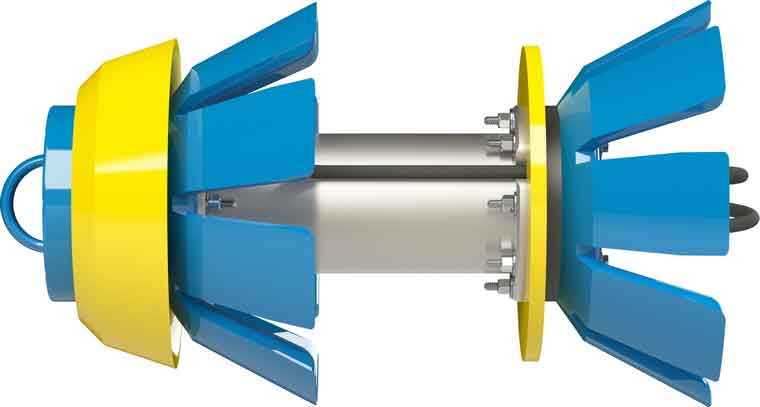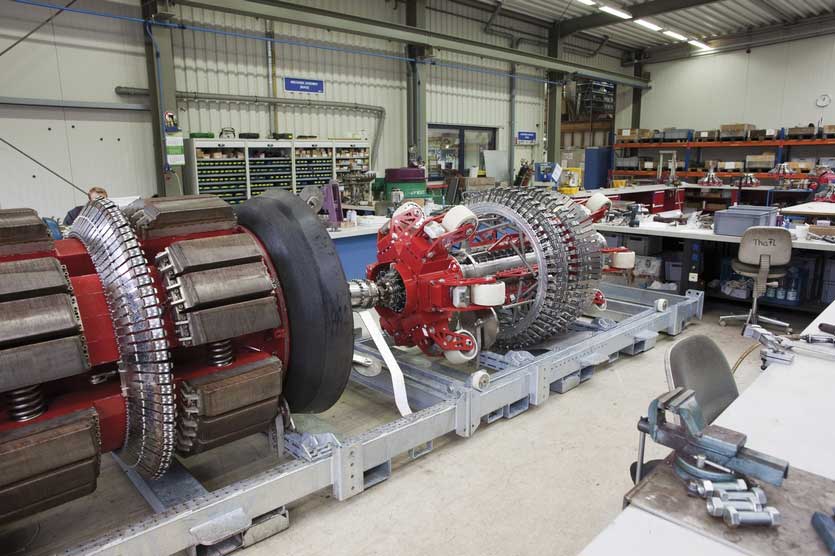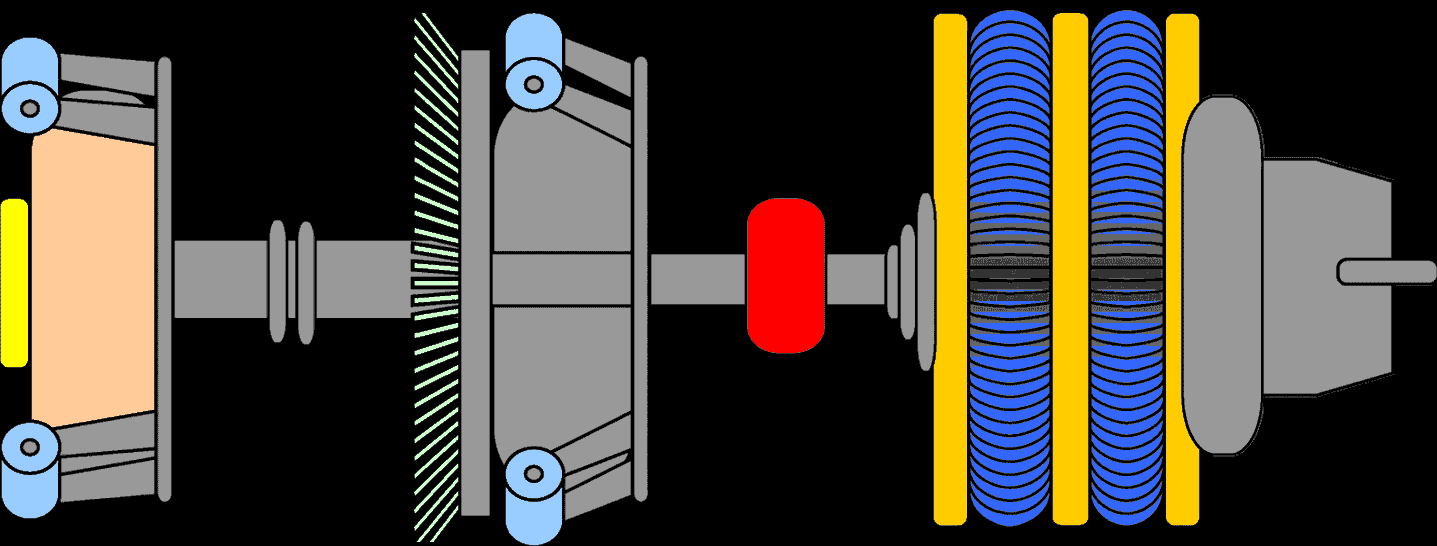Pipeline Pigging
Pipeline Pigging refers to the practice of using devices or implements known as 'pigs' to perform various cleaning, clearing, maintenance, inspection, dimensioning, process and pipeline testing operations on new and existing pipelines. For existing operational pipelines pigging is normally performed without stopping the flow of the product in the pipeline. The 'pigs' can be of differing materials and configurations such Polyurethane Open Cell Foam, Cast Polyurethane and Rubber.
There are some hypotheses for why the process is called 'pipeline pigging', though none have been confirmed. One theory states that in the past, a leather-bound tool was sent through the pipeline, making the sound of a squealing pig as it passed through. Another theory is that after opening a pig trap, the tool lies in a pile of mud, in the same way a pig does.

Pipeline Pig
Image is owned by.. www.i2ipipelines.com
How does the Pigging process work?
By inserting the Pig into a Pig Launcher (or Launching Station) and then applying flow under pressure to the rear of the device it will move into the pipeline. The force applied by a pig as it traverses a pipeline can be calculated by multiplying the cross sectional area of the back of the pig by the pressure applied to the rear of the pig.
Once a pig has launched and is moving through the pipeline the differential pressure can be calculated by subtracting the pressure in front of the pig from the pressure acting on the back of the pig. The pig speed can be calculated by tracking the pig at various points along the pipeline and calculating the time it takes to arrive at each point against the input pressure and flow rate and then converting to velocity.
Generally the outside diameter of most pigs will be sized to be larger than the internal bore and the resultant 'interference' enables the pig to scrape and remove debris as it traverses the pipeline. The degree of effectiveness in cleaning or clearing a pipeline is determined by the type of pig employed along with other influencing factors such as flow rate, pig speed, pressure, temperature, volume of debris to be removed, length of the pipeline, number of pigging runs, number and type of bends, pipeline elevations. pigging frequency and others.
When the pig reaches the other end of the pipeline it is captured in a Pig Catcher (or 'Receiving Station') which is isolated via a shut-off valve, allowing the pig to be safely removed.

Pig launcher/receiver, belonging to the natural gas pipeline in Zwitzerland
The image above shows a station for loading or unloading pigs, the pigs are used for cleaning out or inspecting pipelines. This station is designed to receive pigs from the upstream section and launch pigs into the downstream section, with a cross-over for the fluid to flow from one section to the next. The pre-installed thrust blocks (those empty concrete rectangles in front of the blank flanges) are to support a (temporary) pig-trap which is bolted on to the pipeline in place of the blind flange. The pig-trap normally includes a section of larger diameter pipe to allow the pig to come to a gentle stop with flow passing around the pig. After closing the valves for isolation, the pig can be removed via a quick opening closure (like a flange) on the end of the pig-trap. The fact the pig-traps are not present means that this pipeline is not pigged regularly.
Why is it necessary to Pig a Pipeline?
Pipelines are generally accepted as being the most efficient method of transporting liquids and gases across various distances. They represent a major financial, environmental and operational commitment by all stakeholders and in order to protect these valuable investments, ongoing maintenance must be regularly undertaken to ensure the pipeline continues to deliver optimum performance.
In the case of new pipelines once construction is complete they must be hydrostatically tested to prove they will be capable of the meeting the designated MAOP (Maximum Allowable Operating Pressure). Pipeline Pigs are used during the testing phase to fill pipelines with water and then after completion of the successful hydrostatic test to de-water the pipeline.
Additionally Pigs are used to remove construction debris that may have accumulated during the construction phase of the pipeline. In some cases such as High Pressure Gas Transmission Mains, Pigs will also be used to further clean and dry the pipeline to remove residue moisture, rust, scale and debris in order to meet the minimum Dew Point as required by relevant pipeline construction codes.
Common reasons why pipelines are pigged
Pipeline Cleaning, Pipeline Clearing and Rehabilitation, Proving Servicing, Testing on New Pipeline Construction Projects, Tracking, Poor pumping efficiencies, High Power Costs, Pressure reduction, Discoloration and Turbidity, Product Contamination, Removing debris, Product Recovery, Training, Product Batching and Separation, Internal Bore Gauging, Pre-Inspection Survey Cleaning, Scraping Hard Deposits, Applying internal coatings and/or Chemical Inhibitors, Removal of rust scale and other internal formations, Commissioning, Wiping, Hydrostatic Testing, Filling and Dewatering, Decommissioning, Drying
What are Typical Pipeline Pigging applications?
Water Pipelines
Removal of Mud, Scale, Sediment, Calcium Carbonate, Manganese Iron , Bio-Films, Bacteria and other contaminants
Mining & Process Slurry Pipelines
Removal of Calcium Carbonate, Manganese Iron, Particles, Scale, Rust and other debris.
Crude Oil Pipelines
Removal of Wax, Sand, Bacterial Formations, Chemical Residues, Scale, Rust and other impurities
New Gas Transmission Pipelines
Removal of construction debris, water, rust, scale
Existing Sales Gas Pipelines
Removal iron oxides, iron sulphides and iron carbonates (known as Black Dust)
Process Pipelines
Removal of contaminants, product residues, product recovery and other impurities.
What Pigs should I use?
The Pig selection process is often critical to achieving the desired result. Typical Pig types in use..
Open Cell Polyurethane Foam Pigs
- Soft Foam Proving Cleaning
- Medium Density Foam
- High Density Foam
- Polyurethane Coated Foam
- Criss Cross Polyurethane Coated Foam
- Wire Brush Foam
- Power Brush Foam
- Steel Stud Cleaning
- Plastic Stud Cleaning
- Carborundum Coated Foam
- Foam Tracking
- Double Dish Foam
- Bi-Directional Foam
- Bare Foam
- Foam Spheres
- By-Pass & Jetting Foam
- Tracking
Mechanical Pigs - Hard Cast Polyurethane, Rubber etc.
- Cup
- Bi-Directional Disc
- Cup/Disc
- Scraper/Disc
- Guiding
- Wire Brush
- Magnet
- Tracking
- Scraping
- Batching and Separation
- Multi-Diameter
- Gauging
- By-Pass & Jetting
- Steel Stud Cleaning

Pipeline Pig
Image is owned by.. www.i2ipipelines.com
Which Pipelines are 'piggable'?
Most pipelines constructed in materials such as Steel, Stainless Steel, Duplex Stainless Steel, HDPE, DICL, Cast Iron, Plastic, PVC, AC, GRP and others can all be pigged. Additional considerations such as; number and type of bends, number and type of valves, internal diameter(s), end connections, flow rate, flow media, pressure rating, operating temperature, pipeline length, pipeline elevations, handling of flow and debris downstream and other factors. As mentioned previously, the decision to pig any pipeline should be based on a thorough analysis of the line in conjunction with fieldproven experience and advice offered by a reputable pigging specialist.
Reference(s) .. www.horizonindustrial.com.au
Pipeline Pigging with Smart Pigs
Smart Pigs or Pipeline Inspection Gauges are large pieces of machinery pulled together with powerful technology that help with the maintenance of transmission pipelines. These pipeline pigging devices are major components to pipeline safety and accident prevention. These inspection tools provide data on the condition of pipelines which help gauge the health and integrity of the pipes. In a time where environmental protection is key and of global concern, smart pigs are the peacekeepers of the delicate relationship between pipelines and Mother Earth (and regulators). In addition, these smart pipeline pigs make sure that transmission of the product doesn't stop due to pipeline integrity issues, which can be disasterous to the bottom line.
High-quality pipeline construction is integral as these pipes operate under immense pressure. One leak can cause a massive explosion. Luckily, smart pigs are capable of diagnosing problems that can lead to these environmental disasters before they happen.
What makes intelligent pigging different is that smart pigs are capable of performing advanced inspection activities as they travel along the pipe, in addition to just cleaning it. Smart pigs use nondestructive examination techniques such as ultrasonic testing and magnetic flux leakage testing to inspect for erosion corrosion, metal loss, pitting, weld anomalies, and hydrogen induced cracking, among others. They are also able to gather data on the pipeline's diameter, curvature, bends, and temperature.
Smart pigging provides a number of advantages over traditional forms of pipeline inspection. It allows pipelines to be cleaned and inspected without having to stop the flow of product. It also allows the a pipeline to be completely inspected without having to send inspectors down its entire length. Finally, it provides cleaning and inspection services at the same time, saving companies both time and money.

The above intelligent Pipeline Inspection Gauge (PIG) was specifically developed for the Nord Stream Pipelines by Rosen Group, based in Lingen, Germany. The intelligent PIG is used for internal inspection of the pipelines. It will be inserted into the PIG trap at the start of the pipelines in Portovaya, Russia, and launched into the pipelines, where it will travel with the flow of gas all the way to Lubmin, Germany, where it will be received by a similar PIG trap. The internal inspection will detect any sign of corrosion, a device on it will measure the internal dimensions of the pipeline to detect buckling, its precise position, size and coordinates, and an inertial module unit measures the exact run of the pipelines curves. The intelligent PIG is this photo was developed in 2012, and the technology will be continuously updated throughout lifetime of the pipelines.
Reference(s) for above image and text, is owned by
Nord Stream AG
